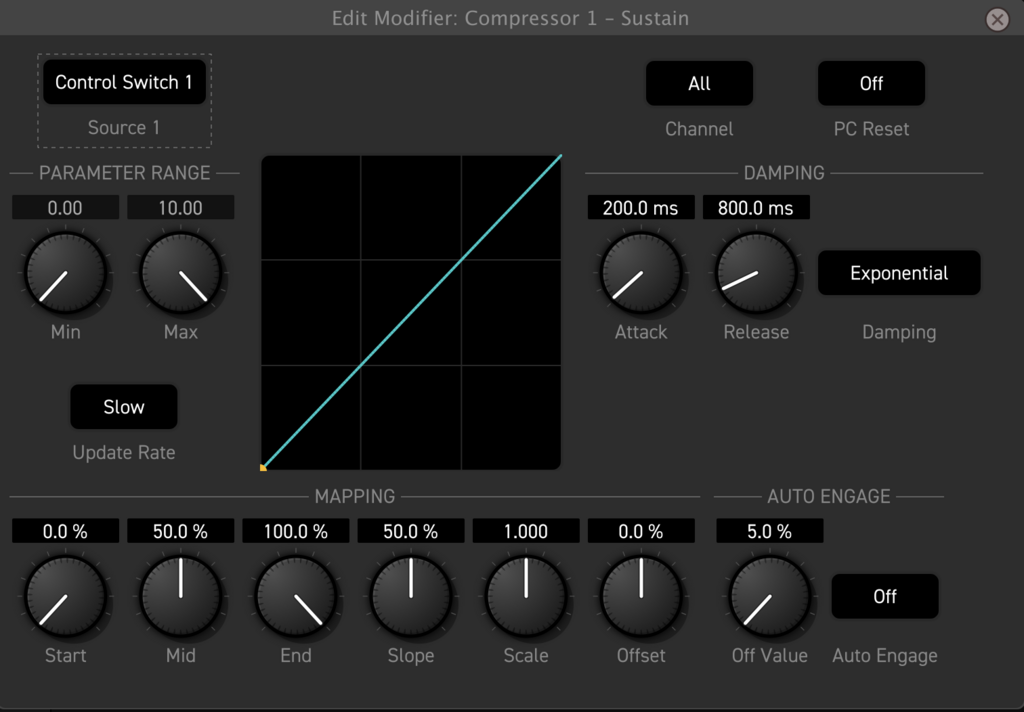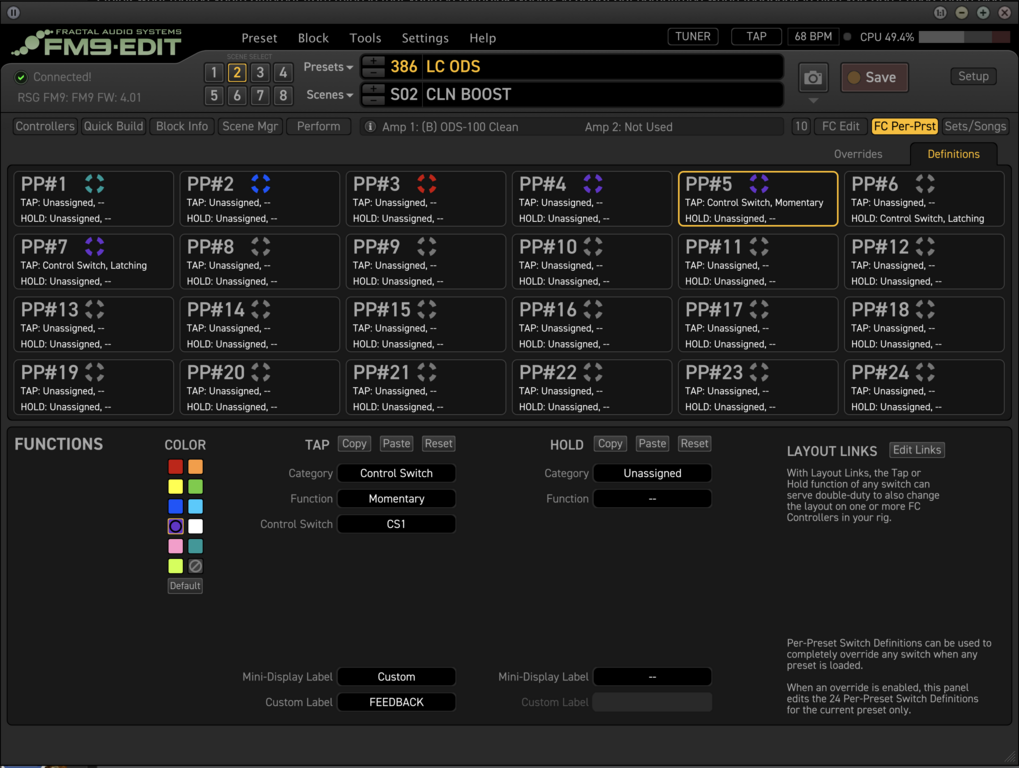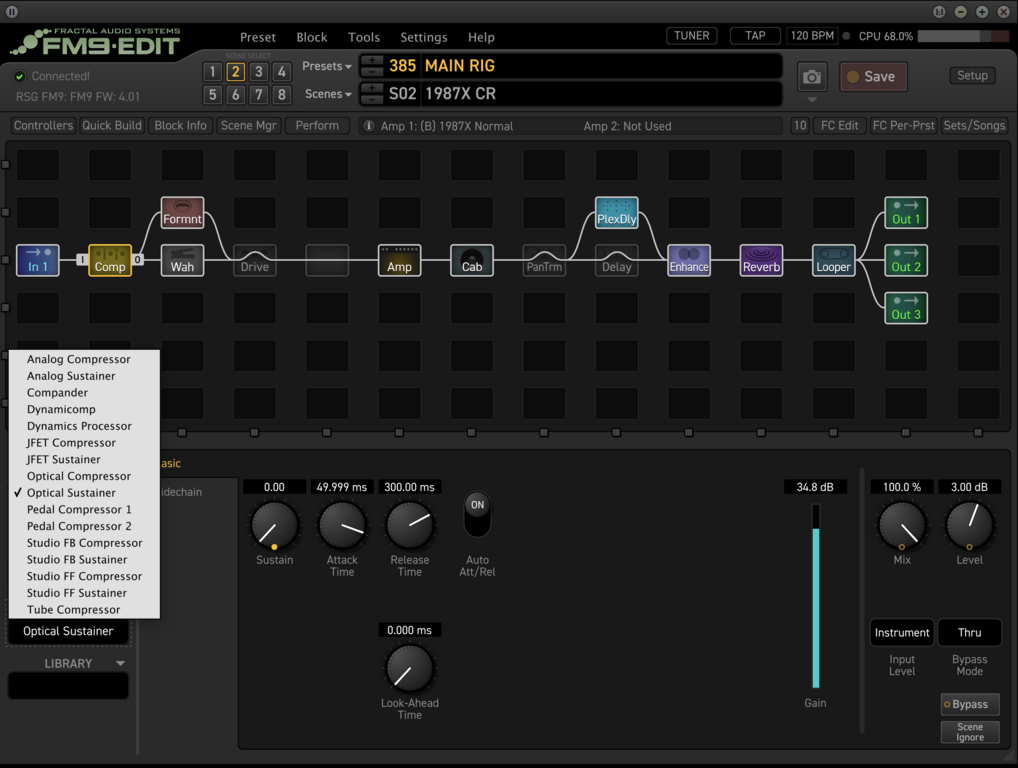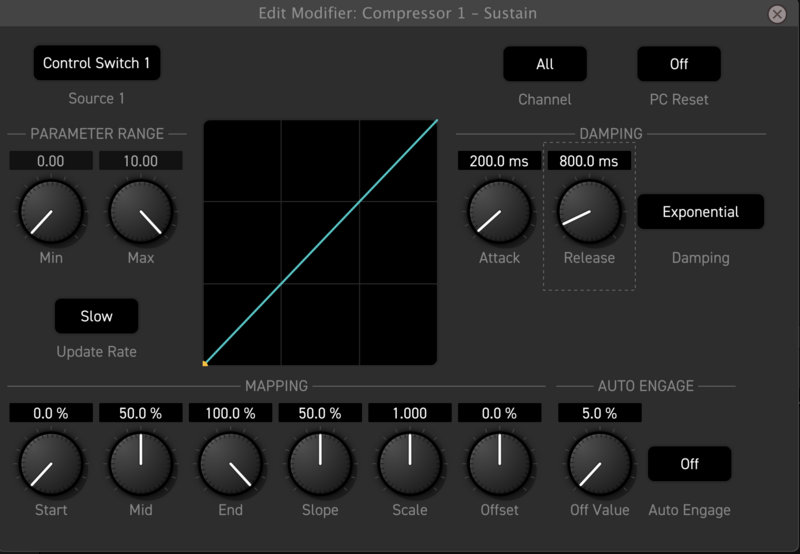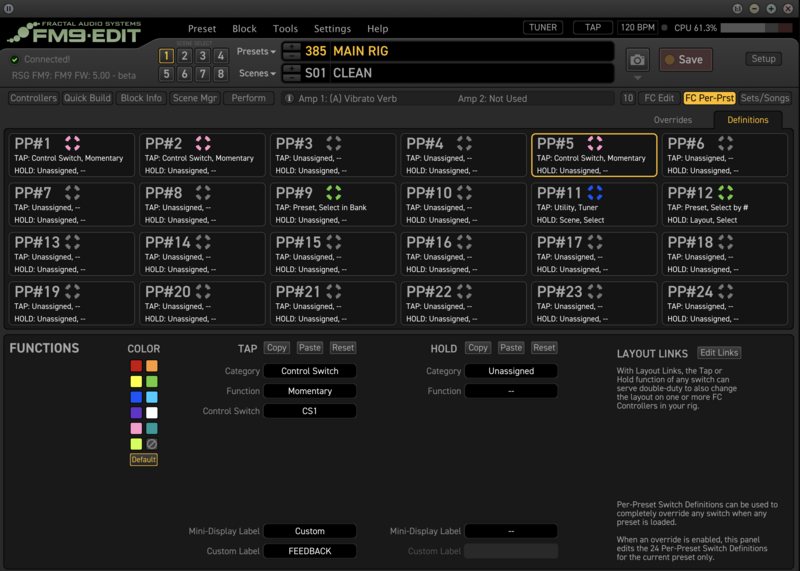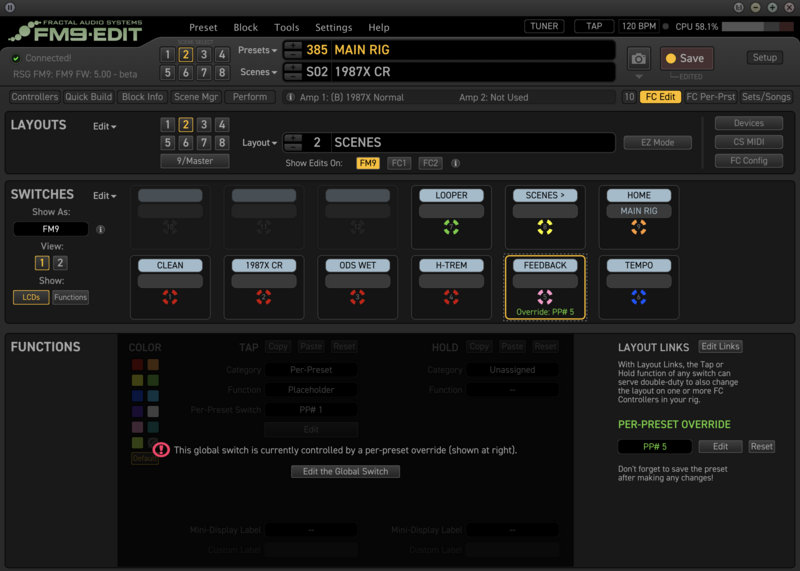Rex Rox
Power User
(Sorry for this book in advance!)
When 4.01b dropped I noticed the optical sustainer compressor addition and wondered if it could make me happier than the Freqout stuff out there using the pitch follower and a synth block (pre 4.01). So I used my real amps and cranked them enough to get some feedback and attempted to hear the relationship between the higher frequency harmonic tones vs lower tones. I specifically tried to hear when each enters into the mix as an amp feeds back.
It was very unscientific (just by ear). But I thought I could make a stab using the new optical sustainer and a pitch block and avoid the glitchy behavior of the synth block/pitch follower approach. For context see Leon Todd's YT vid. The approach he shows kinda works. But I did not like how glitchy the results were. Careful muting and monophonic phrasing are required.
I feel the approaches in this preset yield much better results. They are far less glitchy and will even work (convincingly) with double stops and triads. If you go deeper with chord voicings you have to be more attentive to expression pedal adjustments to avoid pitch artifacts (that don't sound like feedback). With the quad chromatic (scene 3) it is especially important to back off on the expression pedal before you slide on the fretboard. But with a little practice its pretty easy. Speed of the pedal is important here. If you go toe down on the pedal too fast it will sound artificial. But backing off quickly can help add realism. Example: at the end of holding a fed back note in a lead phrase before starting a descending slide.
By accident while fiddling I discovered the new optical sustainer allows me to get natural feedback even at modest bedroom volumes (at least with my guitars in my listening environment). No pitch block required! This happens with just with my studio monitors and at very modest levels (conversational volume) - so VERY COOL! This example is in scene 4. Point your guitar at your monitors if needed!
This preset goes through a range of pitch blocks (by scene/channel) from Scene 1 Advanced Whammy with just a locked in fith harmonic for the feedback, to Scene 2 a dual chromatic with a 5th and an octave, all the way up to Scene 3 a quad chromatic with a 5th, an octave, 19 semitones up (an octave and a 5th) and 2 octaves.
The magic is in using your expression pedal to blend in the "feedback harmonics" (again pay attention to pedal speed!). The other trick is in the modifiers and how they map expression pedal changes to pitch levels. I tried to tune the pedal motion so you can get great results for the different harmonic tones thru the range of your pedal - but of course your mileage may vary. In other words you may want to tune the expression pedal response in the pitch block voice/main level modifiers to your liking.
The expression pedal only changes individual pitch voice levels along with overall pitch block level. Each voice has a different rate of change set in the pedal modifiers making the pedal very expressive (especially through its' final range). This means a little motion towards the end of the pedal throw makes a big difference especially for the higher pitched feedback voices in the quad chromatic pitch blocks. You can inspect the level modifiers to understand what is going on and tune them to your tastes.
Finally Scene 5 is a Quad Chromatic Delay pitch block with added LFO modulated detune for grins and giggles. It adds a little shimmery sugar effect to the faux feedback. Playing with the delays/feedback in this pitch block can also yield some interesting results.
So Happy Firmware Friday! If you loaded 4.01 today then give it a try and I hope you enjoy. I am sure the wizards here can tweak it and make it far better than my newbian self. If you do then please post it back here so we can all glom on!
When 4.01b dropped I noticed the optical sustainer compressor addition and wondered if it could make me happier than the Freqout stuff out there using the pitch follower and a synth block (pre 4.01). So I used my real amps and cranked them enough to get some feedback and attempted to hear the relationship between the higher frequency harmonic tones vs lower tones. I specifically tried to hear when each enters into the mix as an amp feeds back.
It was very unscientific (just by ear). But I thought I could make a stab using the new optical sustainer and a pitch block and avoid the glitchy behavior of the synth block/pitch follower approach. For context see Leon Todd's YT vid. The approach he shows kinda works. But I did not like how glitchy the results were. Careful muting and monophonic phrasing are required.
I feel the approaches in this preset yield much better results. They are far less glitchy and will even work (convincingly) with double stops and triads. If you go deeper with chord voicings you have to be more attentive to expression pedal adjustments to avoid pitch artifacts (that don't sound like feedback). With the quad chromatic (scene 3) it is especially important to back off on the expression pedal before you slide on the fretboard. But with a little practice its pretty easy. Speed of the pedal is important here. If you go toe down on the pedal too fast it will sound artificial. But backing off quickly can help add realism. Example: at the end of holding a fed back note in a lead phrase before starting a descending slide.
By accident while fiddling I discovered the new optical sustainer allows me to get natural feedback even at modest bedroom volumes (at least with my guitars in my listening environment). No pitch block required! This happens with just with my studio monitors and at very modest levels (conversational volume) - so VERY COOL! This example is in scene 4. Point your guitar at your monitors if needed!
This preset goes through a range of pitch blocks (by scene/channel) from Scene 1 Advanced Whammy with just a locked in fith harmonic for the feedback, to Scene 2 a dual chromatic with a 5th and an octave, all the way up to Scene 3 a quad chromatic with a 5th, an octave, 19 semitones up (an octave and a 5th) and 2 octaves.
The magic is in using your expression pedal to blend in the "feedback harmonics" (again pay attention to pedal speed!). The other trick is in the modifiers and how they map expression pedal changes to pitch levels. I tried to tune the pedal motion so you can get great results for the different harmonic tones thru the range of your pedal - but of course your mileage may vary. In other words you may want to tune the expression pedal response in the pitch block voice/main level modifiers to your liking.
The expression pedal only changes individual pitch voice levels along with overall pitch block level. Each voice has a different rate of change set in the pedal modifiers making the pedal very expressive (especially through its' final range). This means a little motion towards the end of the pedal throw makes a big difference especially for the higher pitched feedback voices in the quad chromatic pitch blocks. You can inspect the level modifiers to understand what is going on and tune them to your tastes.
Finally Scene 5 is a Quad Chromatic Delay pitch block with added LFO modulated detune for grins and giggles. It adds a little shimmery sugar effect to the faux feedback. Playing with the delays/feedback in this pitch block can also yield some interesting results.
So Happy Firmware Friday! If you loaded 4.01 today then give it a try and I hope you enjoy. I am sure the wizards here can tweak it and make it far better than my newbian self. If you do then please post it back here so we can all glom on!
Attachments
Last edited:

